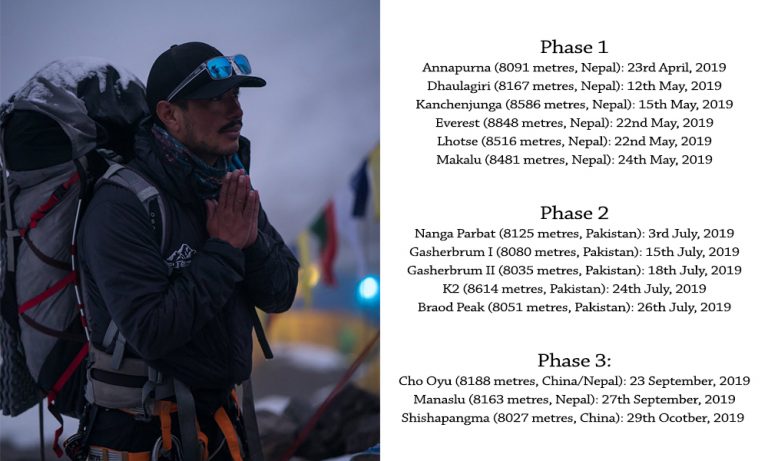
A 36-year-old Nepali became the fastest climber to summit the world’s 14 highest mountains on Tuesday, scaling all the mountains in just over six months, his hiking agency said, a feat other climbers have taken several years to complete.
Nirmal Purja scaled Mount Shishapangma at 8,027 meters (26,335 feet) in Tibet, six months and one week after he climbed his first in the campaign, Mount Annapurna I, kicking off his “Project Possible”.
Mingma Sherpa of the Seven Summit Treks agency that provided logistics to Purja’s team said he was accompanied by three climbers to the Sishapangma summit.
“Mission achieved,” Purja posted on his Instagram from the summit in Tibet, the world’s 14th highest mountain.
Agency official Sherpa said all summiteers were on their way to base camp and expected to return to Kathmandu this week. “This is the world record,” he said.
After climbing Annapurna, the tenth highest peak, on April 23, Purja took on the other “8,000ers”, climbing Dhaulagiri, Kanchenjunga, Everest, Lhotse and Makalu in the following month.
He then went to Pakistan, where he climbed Nanga Parbat, Gasherbrum I, Gasherbrum II, K2, and the Broad Peak.
Purja climbed another two peaks in Nepal – Cho Oyu and Manaslu before heading to Tibet, climbing officials said.
Of the world’s 14 highest peaks eight are in Nepal, five in Pakistan and one in Tibet.
Climbing experts say barely over three dozen mountaineers have climbed all the 14 peaks so far.
The record for the fastest ascent was previously held by South Korean Kim Chang-ho who completed all “8,000ers” in seven years, 10 months and six days, said blogger Alan Arnette.
Purja, who served with British special forces as a Gorkha from Nepal, in May took a photograph showing scores of climbers linked up on the summit ridge of Mount Everest, which went viral exposing the traffic jam in the so-called death zone of the world’s highest mountain.
That photograph led the Nepali government to draft a new set of climbing rules aimed at reducing the crowd on Everest, following criticism by climbers who said it was undermining the safety and issuing permits to anyone who paid $11,000.





